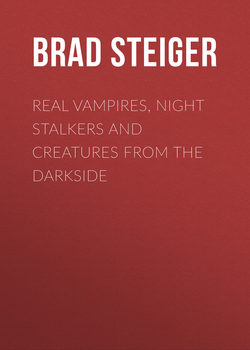Читать книгу Real Vampires, Night Stalkers and Creatures from the Darkside - Brad Steiger - Страница 34
На сайте Литреса книга снята с продажи.
Santeria
ОглавлениеForced to accept the religious practices of their white masters, the African slaves in Cuba were greatly distressed when they could no longer worship the Orishas, their spiritual guardians. Since they were in no position to petition for the right to practice their native religion, the Yoruba and Bantu priests began to notice a number of parallels between the old religion of western Africa and aspects of Spanish Catholicism. While paying obeisance and homage to various Christian saints, the Africans found that they could simply envision that they were praying to one of their own spirit beings. Around 1517, a secret religion was born—Regla de Ocha, “The Rule of the Orisha,” or the common and most popular name, Santeria, “the way of the saints.”
A Santeria drum may be used in religious ceremonies that many North Americans don’t understand and may even fear.
Olorun or Olodumare, “the one who owns Heaven,” is the supreme deity in Santeria. The lesser guardians, the Orisha, are the entities who are each associated with a different Roman Catholic saint: Babalz Ayi became St. Lazaurus; Oggzn became St. Peter; Oshzn became Our Lady of Charity; Elegba became St. Anthony; Obatala became the Resurrected Christ, and so forth. Priests of the faith are called Santeros or Babalochas; priestesses are called Santeras or lyalochas. The term Olorisha may be applied to either a priest or a priestess.
While Santeria’s rites are controversial in that they may include the sacrifice of small animals, it is essentially a benign religion. Each celebration usually begins with an innovation of Olorun, the supreme deity. Dancing to strong African rhythms continues until members are possessed by various Orisha and allow the spirits to speak through them. The ritual is climaxed with the blood sacrifice, usually a chicken.
Santeria continues to grow among Hispanics in Florida, New York City, and Los Angeles. Some estimates state that there are over 300,000 practitioners of Santeria in New York alone.
While the secret rites remain hidden from outsiders, a few groups have recently emerged which allow their members an opportunity to practice Santeria freely. The Church of the Lukumi Babalu Aye was formed in southern Florida in the early 1970s and won a landmark decision by the Supreme Court to be allowed to practice animal sacrifice. The African Theological Archministry, founded by Walter Eugene King in South Carolina, now reports approximately 10,000 members. The Church of Seven African Powers, also located in Florida, instructs its members how to use spells in their daily lives.
In April 1989, the religion of Santeria was dealt a blow that severely tainted its image in the public consciousness. Police officials digging on the grounds of Rancho Santa Elena outside of Matamoros, Mexico, found a dozen human corpses which had all suffered ritual mutilations. When it was learned that the mother of Adolfo de Jesus Constanzo, the leader of the drug ring responsible for the murders, was a practitioner of Santeria, a media frenzy swept across both Mexico and the United States. Santeria was most often defined by the media as an obscure cult that was a mixture of voodoo and demon-worship.
Constanzo had actually created his own concept of a cult and declared himself its High Priest. He was joined by Sara Maria Aldrete, an attractive young woman, who led a bizarre double life as a High Priestess and as an honor student at Texas South-most College in Brownsville. Although, on the one hand, the ritual sacrifices were used as a disciplinary tool by the drug boss, it was learned from gang members that Constanzo had promised his followers that they would be able to absorb the spiritual essence of the victims.
Subsequent investigations of Constanzo’s grotesque version of a cult of human sacrifice determined that he had combined aspects of Santeria, voodoo, an ancient Aztec ritual known as santismo, and combined them with elements of his own bloody cosmology. Mexican police officials had discovered the grisly handiwork of the drug ring by following one of its members to a large black cauldron in which a human brain, a turtle shell, a horseshoe, a human spinal column, and an assortment of human bones had been boiled in blood.
